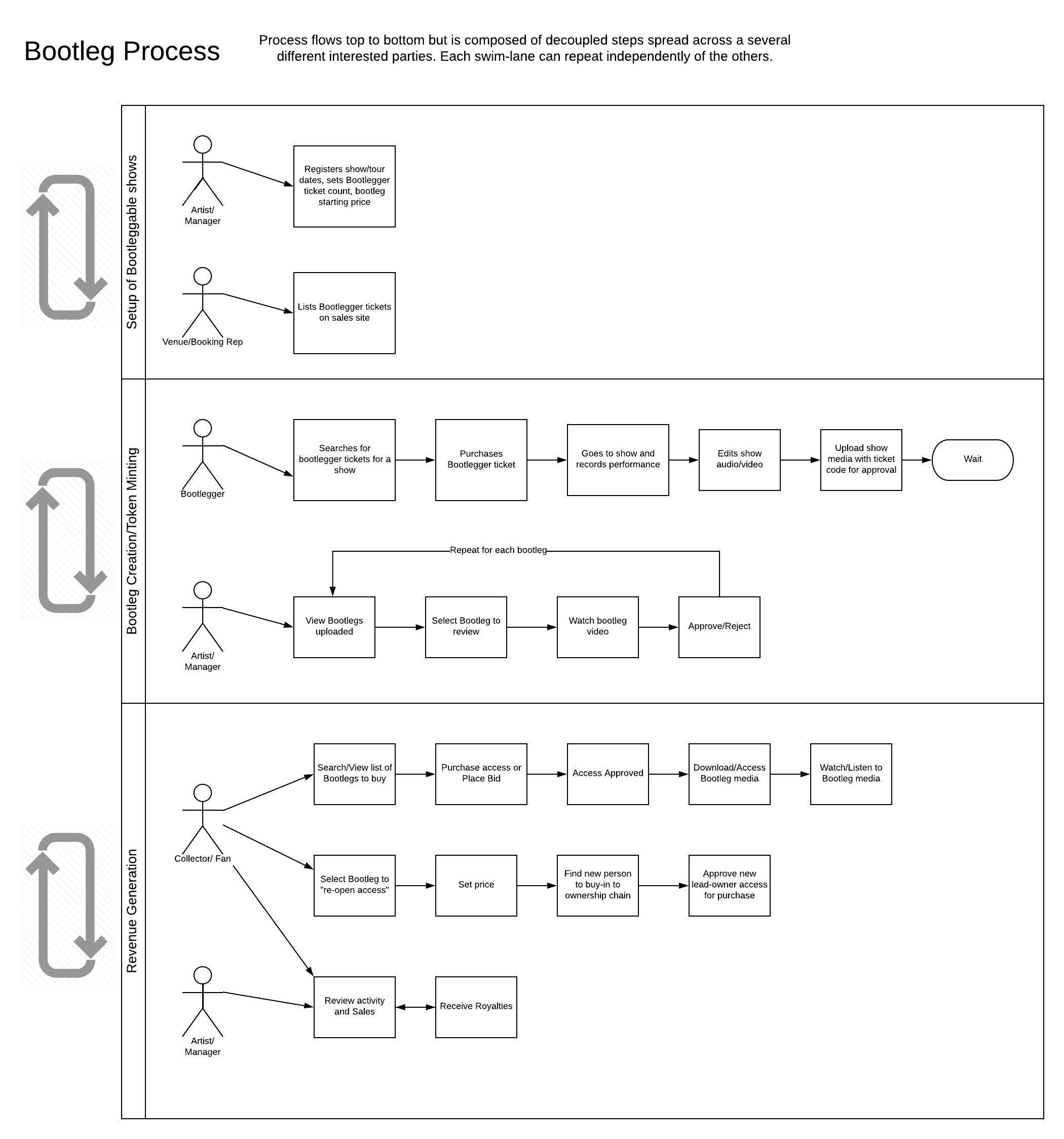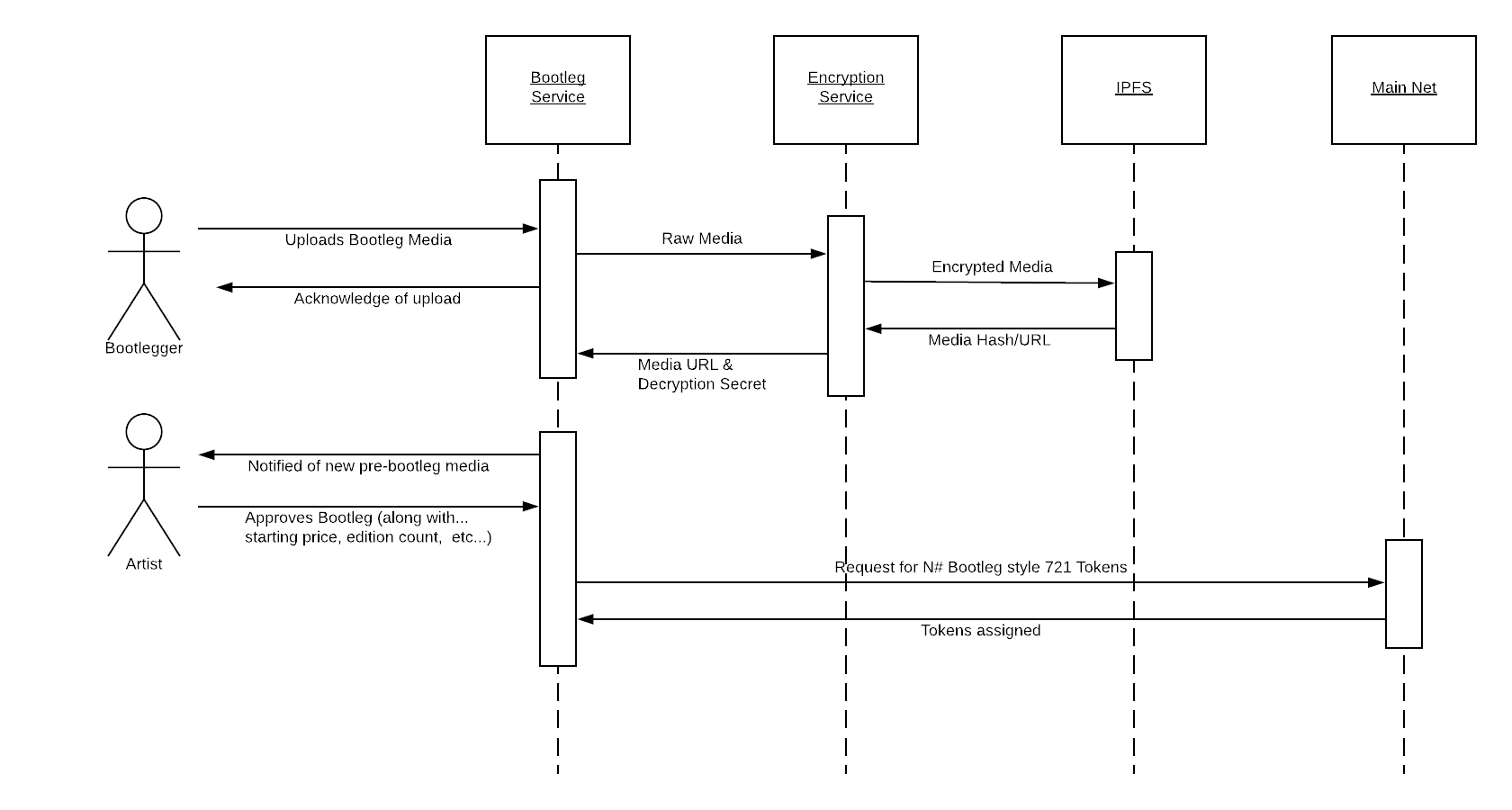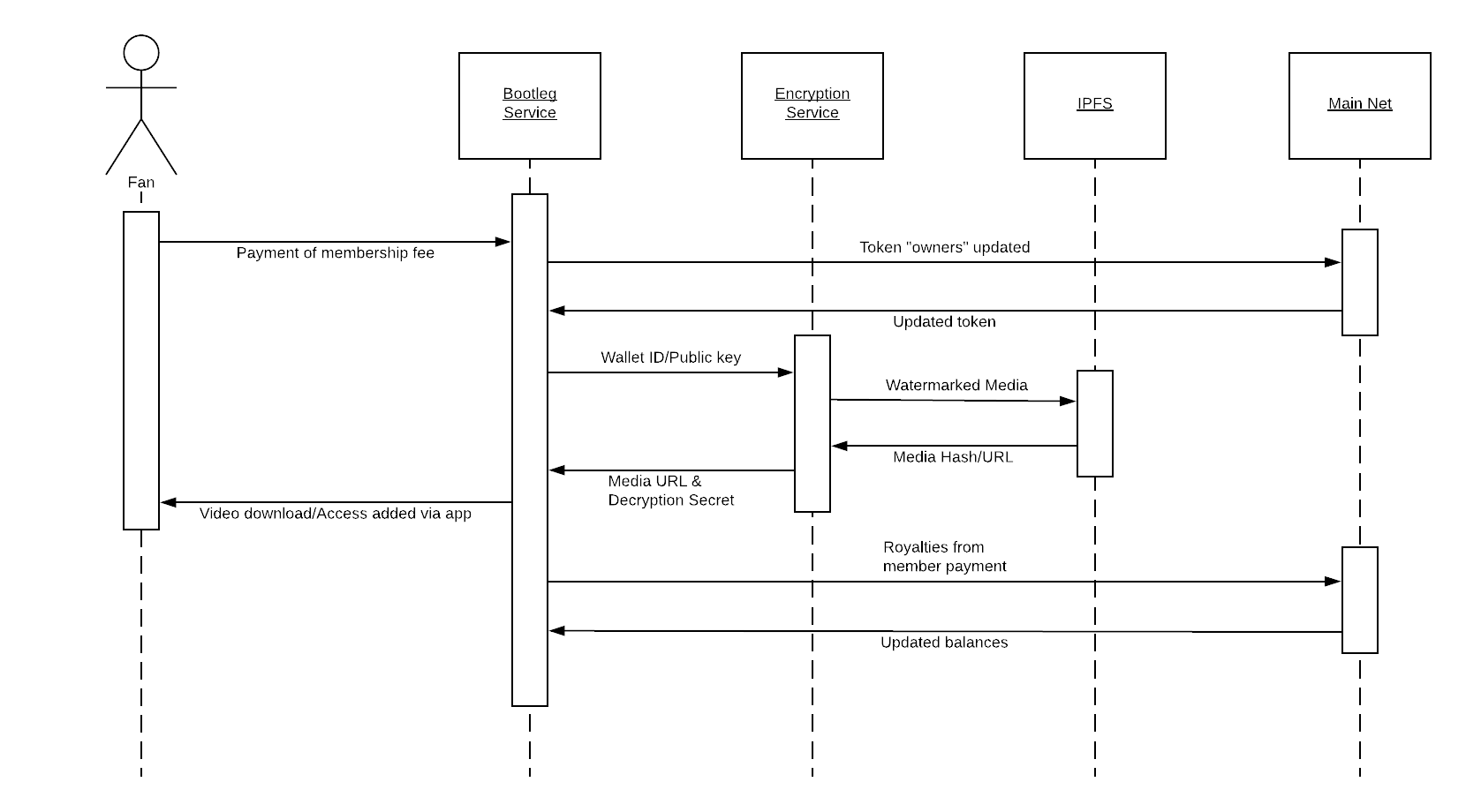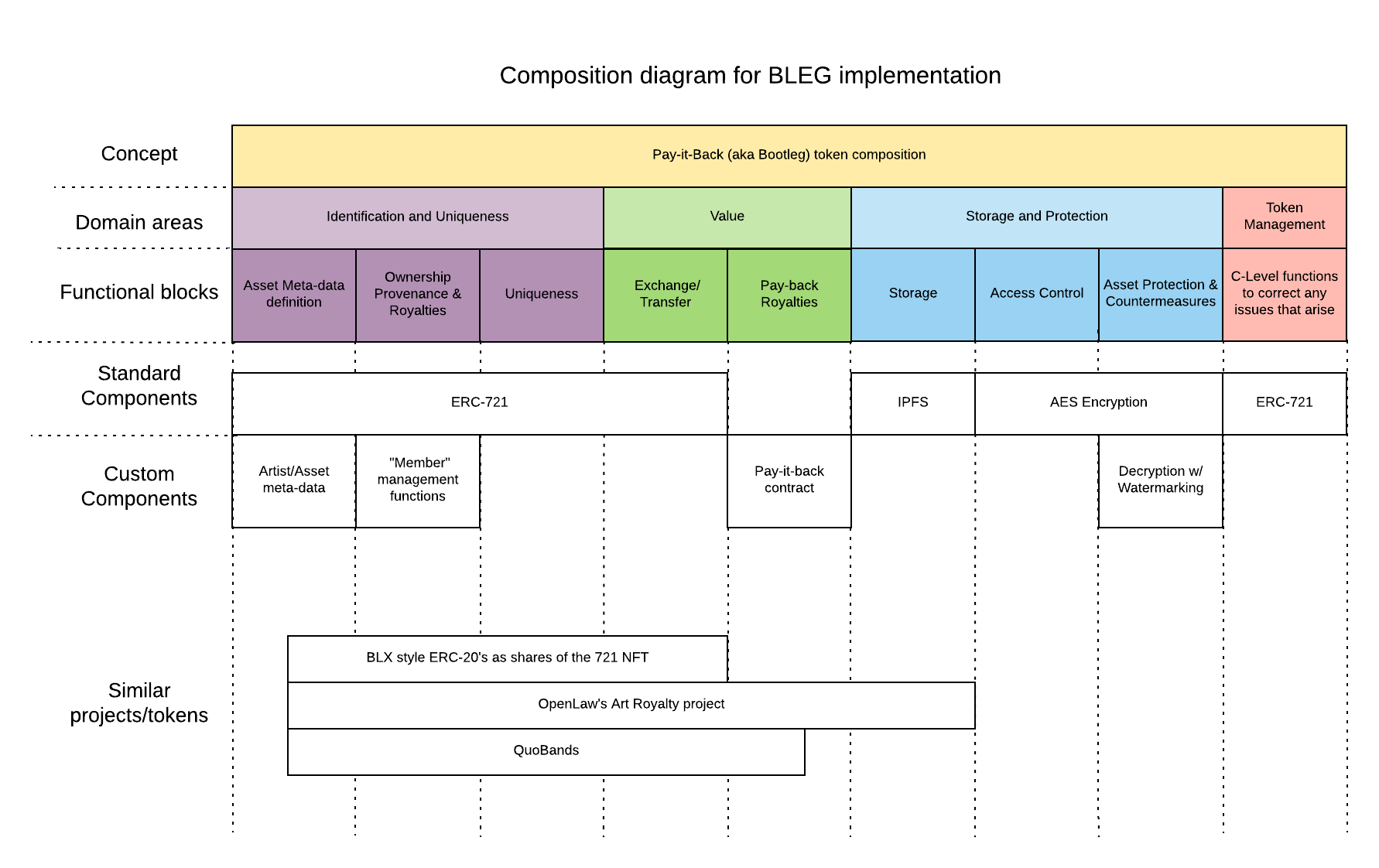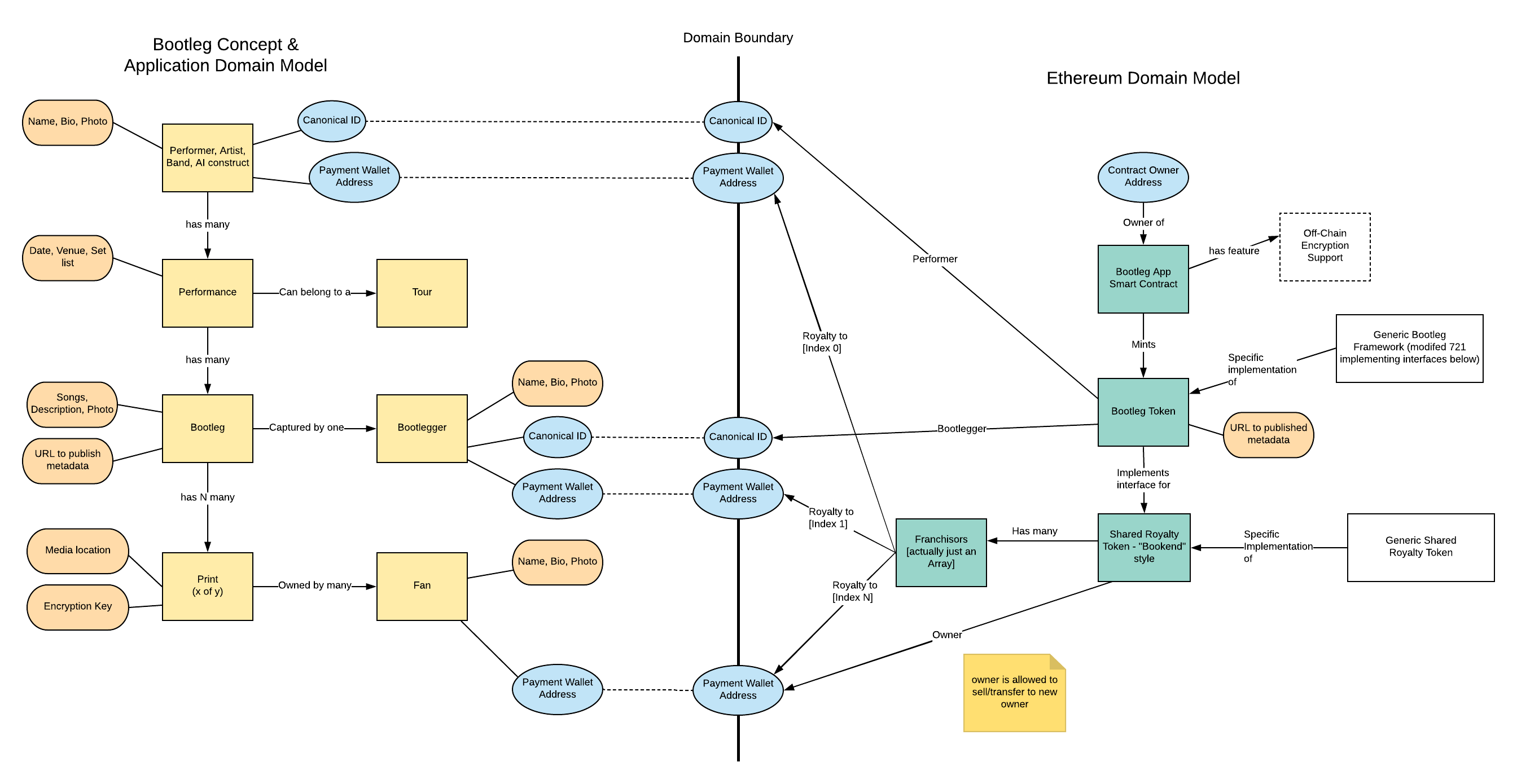ConsenSysMesh / Web3studio Bootleg
Programming Languages
Projects that are alternatives of or similar to Web3studio Bootleg
Steal this Code
Packages . Architecture . License
Welcome to the near future. This repo is the home of Bootleg 👢🦵. This is the latest project from the Consensys Web3Studio team. We are beginning development on this exciting new idea and you can follow the latest updates here through GitHub. Please join the discussion, create issues, and get involved!
Check out the Bootleg developer kit, and read more about the project in the latest article about Bootleg on Medium
Project overview
This repo holds the code and development assets for the Bootleg SDK. The repo and many of the high level concepts in this project all pay homage to the original article about the idea published on Medium. Whenever possible we have attempted to use more generic terms in our code and domain models so that as much code from this repo can be re-used, shared, re-purposed by anyone. We have done our best but it is a tradeoff between making something we feel embodies the spirit of the idea and speculating about what would be useful for someone using the work to build their own idea.
Packages
This is a monorepo that contains the projects that make bootleg rock 🎸. You can find
the code for all of them in in the packages folder.
You'll notice two prefixes. bootleg projects are directly related to the fictional
bootleg app, or the smart contracts it uses. dONT projects are related to a system to
create non-transferable digital native assets, basically blockchain DRM.
bootleg-app
Everything comes together here. This is the demo dApp where we created a UI to trade the first ever Bootleg token. It exercises the token and the mechanics of the SRNFT token. You can view the token details, list it for sale, purchase it from someone (joining the franchisors list), download the video file attached to the token, and (most importantly) withdraw the eth you earned as part of the franchisors.
bootleg-tokens
This is where you can find the smart contracts for the bootleg token itself. This is where you would want to look if you want to use our pay-it-backwards tokens in your dApp.
bootleg-app-contracts
Here lies the smart contracts used by our fictional app. It's a great reference implementation for your Bootleg-esk dApp.
dont-crypto
Where the rubber hits the road. A phenomenal library to encrypt and then cryptographically watermark an asset to allow copyright holders to find who leaked their content. Note: dONT is getting a lot of traction outside of the Bootleg project so it was moved into it's own repo. https://github.com/ConsenSys/web3studio-dONT Follow along with the action there!
Architecture
Disclaimer: The purpose of the work here is to inspire others to try and implement something like what we've described. Building a full working system of this level of complexity would require a non-trivial amount of work. We believe the information here represents our best-guess at what we might build should we have the time/resources to do so. Our hope is that you will find parts of this project inspiring or thought provoking enough to dig in and experiment on your own. We are open to any questions, comments, feedback but keep in mind that this is a work of fiction.
System Components
We are imaging that the system to support the story defined in Bootleg would be composed of multiple systems. WE ARE NOT BUILDING ANY OF THESE IN THE SDK. However, they might be useful and/or part of an actual implementation of a Bootleg-like product in some way. Documenting them here helps us (as developers of the SDK) focus on important technical parts of the system knowing that the packages we created (listed above) have their place in the large system whole. The imagined systems are as follows:
Mobile/Web Apps
Fan App - The fan app will allow people to access and view the bootlegs created by the Bootleggers in the system. It will function similarly to a music store but instead of buying to own the bootlegs you are buying access and future royalties on sales. Through the fan app you would be able to search for artists you like, see the latest popular Bootlegs, gain access and watch audio/video of the concert. There is also a social component where you can connect with other fans, bootleggers, and artists on the platform.
Bootlegger App - Used during the concert, the app would allow the person creating the Bootleg to capture the audio/video recording of the concert. It would support all the functions around requesting access to the band to become a bootlegger for them, handling any royalty agreements, promoting your existing Bootlegs through the platform, and connecting with fellow Bootleggers at/around the concert you are attending. Note: This app is also built to support desktop use so audio/video files can be edited using traditional DAW/Non-linear editing software.
Artist App - Primarily used for approving the bootlegs that have been submitted by the Bootlegger. This app would also be used for updating the artists page, communicating with Bootleggers. It has integrations with social media (Twitter, Facebook, Patreon, etc...) to reach out to fans and promote their concerts.
Bootlegger Systems - The fictional company behind the Bootlegger product would need a management system. This system would be composed of several web-apps/services that would cover the following:
- Approving new Bootleggers and Artists, management of their profiles, bootlegs, and any administration around royalty payments.
- Management of Bootleg artifacts and sales
- System for resolution of any disputes around ownership/access
- Ticketing system for issues with the quality of the Bootleg video/audio, access to decrypted videos, etc... (e.g. re-uploading a file, adjusting payouts, removing bad-actor members, offensive content, etc...)
General System Flow
The diagram below outlines the different users involved in the Bootleg process. Each group of users interacts with the product/application in different swim lanes that are somewhat independent from each other and cyclical.
Bootleg Creation Sequence
The diagram below shows the sequence of events during the minting of new Bootleg tokens.
New Member Added Sequence
The diagram below shows the sequence of events when someone pays for access to a Bootleg recording.
Ethereum
The Bootleg system runs on Ethereum through the use of custom Smart Contracts and a 721 compliant tokens.
Token Design
The purpose of the token design diagram was to think about the structure of the conceptual Bootleg Token. It is composed of several domain areas, and then further decomposed into several functional blocks. Once we had these defined we set out to find existing tokens and projects that could be used for the project. We did not want to re-invent the wheel but if the wheel needs some extra bearings or fancy spokes we are okay with that.
After our survey of what is out there (and there is a lot, much I'm not even mentioning here) we felt that the ERC721 contract design would handle 80% of what we needed and for the rest we would add in custom smart contracts for specific areas of functionality.
Domain models
License
As per usual, we are publishing under the Apache 2.0 License.


